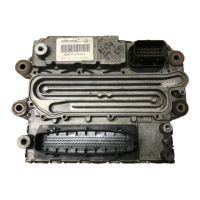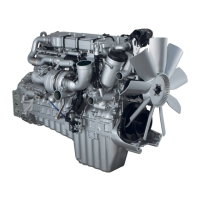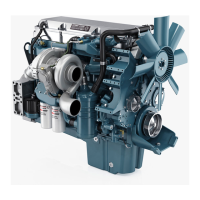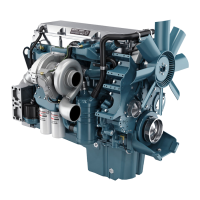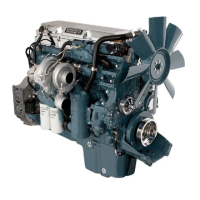
Do you have a question about the Detroit Diesel GM Bedford 220 and is the answer not in the manual?
| Brand | Detroit Diesel |
|---|---|
| Model | GM Bedford 220 |
| Category | Engine |
| Language | English |
Details about the GM Bedford new engine warranty and availability of related forms.
Explains the four-stroke cycle (Intake, Compression, Power, Exhaust) of diesel engines.
Provides specifications for 220, 330, and 500 cubic inch GM Bedford Diesel engines.
Details oil pan capacities in U.S. quarts, Imperial pints, and litres for different engine models.
Describes the engine option plate attached to the valve rocker cover.
Explains the two-series numbering system for engine serial numbers.
Details the eight-digit model numbering system for current GM Bedford engines.
Instructions for ordering parts, requiring engine model and serial numbers.
Describes the fuel system components and operation, including pumps and filters.
Details fuel delivery to injectors and the importance of their periodic inspection.
Explains the C.A.V. distributor type fuel injection pump and its mounting.
Describes the main fuel filter, its replacement interval, and procedure.
Details the fuel pump operation and its manual priming function.
Provides instructions for venting air from the fuel system before starting.
Explains the governor's role in maintaining accurate engine speed control.
Describes air cleaner mounting and service instructions for light and heavy duty types.
Details the full-flow oil filter, its bypass valve, and replacement procedure.
Outlines maintenance for coolant level, draining, and drive belts.
Lists common causes of engine overheating and their remedies.
Recommends checks for coolant leaks, hose deterioration, and connections.
Describes the use of commercial descalers for cleaning cooling systems.
Explains the procedure for reverse-flushing the radiator and engine block.
Provides instructions for filling the cooling system to ensure proper coolant levels.
Explains the function and operation of the Thermostart cold start aid.
Guides on preparing engines for initial start-up after new or storage.
Step-by-step instructions for starting the engine daily.
Discusses normal oil consumption after piston and ring seating.
Factors influencing good fuel consumption in diesel engines.
A chart detailing maintenance intervals for various engine components.
Instructions for checking engine oil level daily.
Guidance on changing engine oil after the run-in period and thereafter.
Procedure for replacing the engine oil filter element and gasket.
Check for leaks in the lubricating system every 100 hours.
Instructions for checking and maintaining the coolant level.
Recommends flushing and cleaning the cooling system periodically.
Check for coolant leaks in the system every 200 hours.
Procedure for replacing the fuel filter element every 500 hours.
Check fuel tank level daily and fill at end of day to minimize condensation.
Check fuel lines and connections for leaks every 100 hours.
Service intervals for air cleaner and filter element.
Check battery condition and clean terminals every 200 hours.
Check battery cell electrolyte level every 50 hours.
Check the specific gravity of battery electrolyte every 200 hours.
Check and adjust fan belt tension after initial operation and periodically.
Check engine mount nuts and bolts for tightness every 200 hours.
Check exhaust system nuts and bolts for tightness every 200 hours.
Check and adjust valve clearances every 200 hours.
Lubricate throttle linkage every 100 hours.
Discusses the importance of fuel quality for engine performance and life.
Details fuel classifications and properties required for GM Bedford Diesel engines.
Lists five basic requirements for a suitable engine coolant solution.
Explains the role of corrosion inhibitors in protecting cooling system metals.
Discusses chromate inhibitors and their potential issues with permanent antifreeze.
Details the use of soluble oil as a corrosion inhibitor and its concentration limits.
Describes non-chromate inhibitors and their advantages.
Explains inhibitor systems for corrosion protection, pH control, and water softening.
Discusses replaceable coolant filter elements and inhibitor compatibility.
Recommends non-chromate systems for GM Bedford Diesel engines.
Provides general recommendations for using permanent antifreeze and inhibitors.
Procedure for adjusting valve clearances for smooth engine operation.
Instructions for setting the engine's idle speed.
Steps to protect the engine interior and exterior from rust and corrosion during storage.
Instructions for preparing an engine for start-up after storage.

